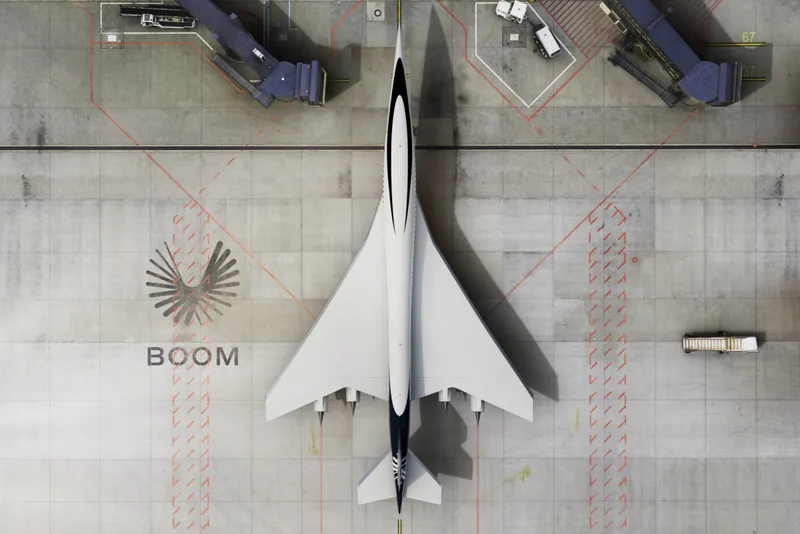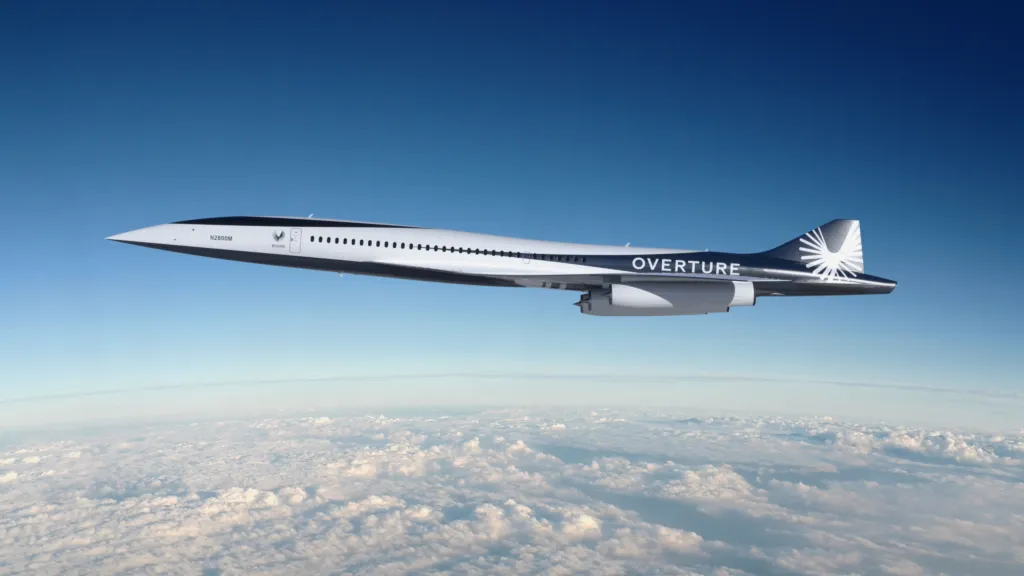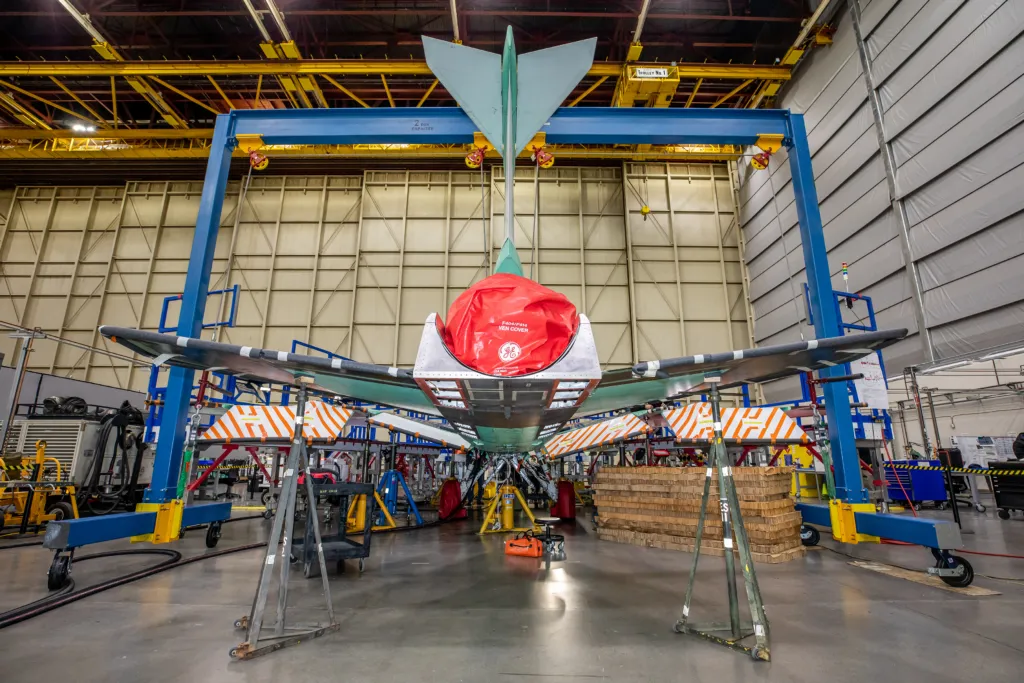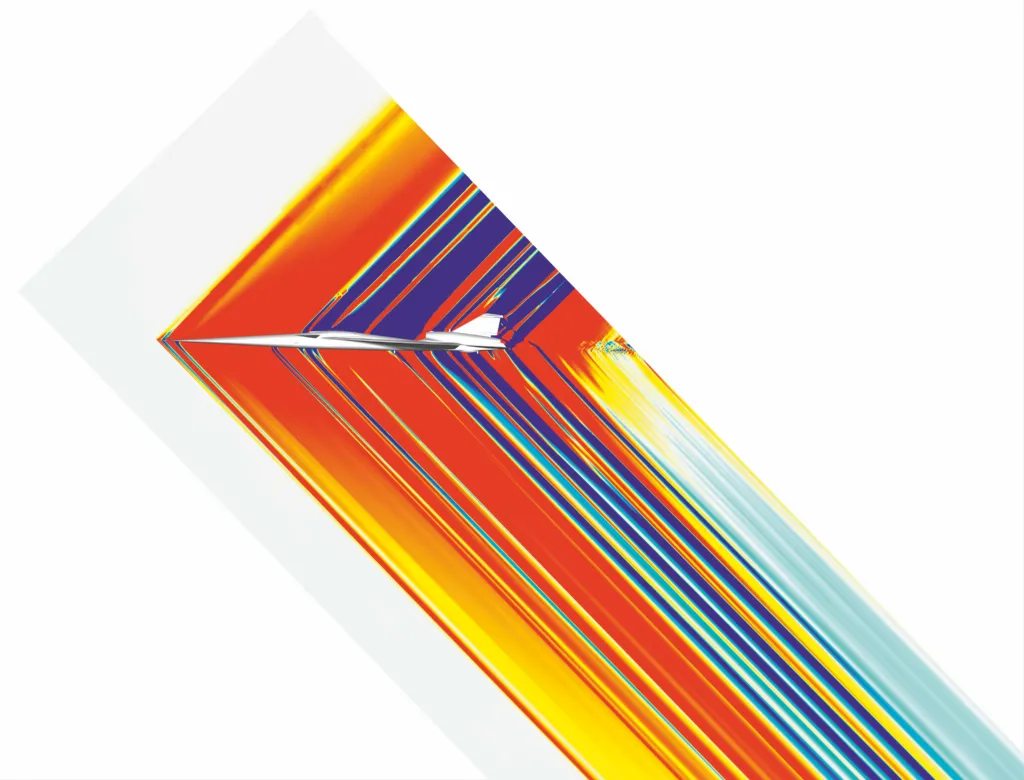November will mark the 20th anniversary of Concorde’s retirement. And with it, a lengthy pause on regular, paying airline passengers (albeit those with healthy bank accounts) travelling faster than the speed of sound – 343 metres per second, or 761mph (1,224km/h).
Many still mourn the distinctive, dart-shaped aircraft’s loss, deeming its costly tickets, urgent fuel use and thunderous sonic booms when it breached the sound barrier as acceptable prices to pay for being propelled across the Atlantic at Mach 2 (over 1,500mph or 2,400km/h).
Supersonic travel looks to be on its way back, though, and in a cheaper, cleaner and quieter form. “Concorde was a technical marvel and well ahead of its time,” says Ben Murphy, vice president of Sustainability at Boom. “But it was a nationalistic project that hadn’t been built around a viable economical model.”
Boom is an American company aiming to fly passengers supersonically by the end of the decade on its new Overture aircraft.
“We can build on Concorde’s legacy with nearly 60 years of advancement in aerodynamics, materials and propulsion systems,” Murphy says, “with the use of sustainable aviation fuel (SAF) enabling the return of supersonic travel in an economical and environmentally sustainable manner.”

SAF is seen as the most viable route to reduce the carbon footprint of aviation and can cut a plane’s lifetime carbon dioxide emissions by 80 per cent. It can be made by recycling waste materials from landfill and food production, or produced synthetically by carbon capture from the air.
SAF can also be mixed in a 50/50 ratio with regular aviation fuel to partially decarbonise the airline fleets operating right now.
The viability of supersonic travel
Overture’s propulsion is based entirely around SAF, with Murphy and his team all too aware that the aircraft’s green credentials are vital to the project winning favour.
“Concorde was famously loud and dirty, [powered by] afterburning military-derived engines that produced a lot of particulate matter. That’s the image people have in their mind,” says Murphy.
“We’ll travel twice as fast as a regular subsonic passenger plane over water [around 1,300mph or 2,090km/h] and 20 per cent faster over land [just shy of 700mph or 1,100km/h], meaning we’ll burn up to 2.5 times as much fuel per flight, but with SAF giving us a net zero carbon footprint.”

In the early stages of the project, the team at Boom purchased old Concorde seats – “they’re basically an economy-class seat today” – to work out how to arrange the 64-80 business-class seats that’ll sit in each Overture.
The thinking behind the smaller seats is that the faster journey times Overture will offer, makes the luxury of bigger, fully reclining, ‘lie-flat’ seats, as found in the more premium classes of today’s long-haul flights, unnecessary.
Overture’s longer range – 4,250 nautical miles [approx 6,850km] versus Concorde’s 3,900 [6,270km] – opens up more than 600 economically viable routes and much greater variety than its forebear, with LA to Sydney possible with a fuel stop.
Its top speed of Mach 1.7 (1,304mph or 2,098km/h) lags a little behind Concorde’s Mach 2, but also negates the need for noisy afterburners, a fuel-guzzling solution usually found on military jets to increase the thrust of an engine.
London to New York in around four hours (versus Concorde’s three hours and 20 minutes) is still significantly quicker than a business-class flight at subsonic speeds.
Overture’s expected routes will largely be over water, with supersonic travel currently prohibited over land to save those of us on the ground from the disruption of sonic booms. “We’ve made a software set that predicts where the sonic booms will propagate to find the fastest route,” says Murphy.
Benchmark flights

Overture won’t be the first Boom aircraft to fly, however. The company’s XB-1 experimental craft is set to make its first test flight in Mojave’s supersonic corridor, in California, later this year.
Overture’s debut flight is scheduled for 2027, with passengers due to travel by the end of the decade (with tickets expected to cost a little more than those of business-class prices). By the early 2030s, Boom hopes to be making 66 Overtures a year at its North Carolina plant.
Given those ambitions, what does Murphy have to say to anyone scaling back their air miles in pursuit of a greener planet? “Sometimes it gets lost that travel brings a lot of benefits,” he says.
“A more connected world has brought huge economic growth and cultural exchanges lead to a more peaceful planet. We want to make people feel good about travelling. You can both travel and protect the planet. It’s not an ‘either/or’ situation with the technology we’re working on today.”
It’s a view echoed by Mike Bannister, British Airways’ chief Concorde pilot from 1995 until the aircraft’s retirement in 2003 and an occasional advisor on the Overture project.
He clocked 9,000 flight hours on the legendary passenger jet before its final flight, with 7,000 of them above the sound barrier, likely making him the most frequently supersonic human who isn’t an astronaut.

“I’m an optimist – I think humans never take a backward step for too long,” says Bannister. “My daughter is a commercial pilot on a 737. She was 10 when Concorde retired and she said, ‘But dad, I really wanted to fly supersonically’. I think she now has a chance.”
Bannister’s career-high came as he flew in formation with the Red Arrows for Queen Elizabeth II’s golden jubilee in 2002 (Her Majesty and two million spectators waving up at the cockpit as he buzzed the capital at 1,000ft/300m) little over a year before he landed Concorde for the final time. “We didn’t know at that point,” he admits.
The reasons for the aircraft’s retirement were numerous, but ultimately financial. “In the 1990s we looked at modernising the controls,” Bannister says. “By this point, Concorde was making £1m profit per round trip per day, so the cost of grounding one [of British Airways’ fleet of seven] for a year of recertification was too high.”
He estimates the plane could have soldiered on to 2015 with enough money behind it.
“The seats might have been small, but they were built to 1960s standards,” says Bannister. “And the short time you spent on board, actually sitting in them, more than compensated.
“Even though you flew at 60,000ft [approx 18,000m – 20,000ft / 6,000m higher than a subsonic plane] its cabin was pressurised for a lower effective altitude than regular flight. Crossing the Atlantic, you’d basically spend three hours and 20 minutes up a 5,000ft hill [in terms of cabin pressure] rather than eight hours up an 8,500ft mountain.”
The draws of travelling aboard Concorde didn’t end there, though. “At supersonic speed, you travel so quickly you go faster than Earth rotates,” explains Bannister. “So the Sun appears to go backwards, which scientists tell us resets the body clock. To all intents and purposes, it eliminated jet lag.”

A smaller bang
“Overture looks a lot like Concorde, but that’s understandable,” says Bannister. “The issues of aircraft heating expand exponentially as you travel faster and there’s probably only one optimal solution.
“I flew the first generation of supersonic travel and Boom is launching the second. But the third is when we can reduce the impact of the sonic boom to allow supersonic travel over land. That’s the Holy Grail.”
And it’s a target firmly in the sights of the engineers behind X-59 QueSST, a Mach 1.4 experimental aircraft produced by Lockheed Martin as part of NASA’s pursuit to suppress the aural impact of the sonic boom.
X-59 QueSST’s first flight is due by the end of 2023, two years later than initially planned. It’ll conduct what are dubbed ‘community flight tests’, amassing US residents’ views on its suppressed ‘sonic thump’, which aims to reduce Concorde’s 110-decibel sonic boom (about the same perceived loudness as thunder) to around 75 decibels (equivalent to a car door being shut).
The trick is to separate the shockwaves caused by the plane pummelling the air beyond the sound barrier. It’s thought you can do that by refining the shapes and inlets of an aircraft’s nose, wings and tail so that those waves don’t coalesce before they reach the ground.

Adjustable bodywork could allow pilots – or, indeed, algorithms – to react to flight data to ensure a supersonic plane’s acoustic signatures remain quiet during a journey. Planes flying faster than the speed of sound currently drop sonic booms to the ground the entire time they’re supersonic.
Available to the public
“The X-59 is just one critical step in the process of making supersonic travel commercially viable,” says its programme director David Richardson. “It proves to the general public and to regulators that quiet supersonic flight is achievable, thereby making supersonic commercial flights practical if they can now go over land.”
He sees 2037/2038 as a target for a passenger jet being both technologically and legally capable of doing so. “We’re very excited about the potential change this could have for everyone, including me and you. It’ll likely always be more expensive than an economy ticket on a large subsonic airliner – but remember, you’ll get there twice as fast.”
Keeping things below Mach 1.8 (and so foregoing afterburners) reduces fuel costs and simplifies servicing, a cost saving that ought to make its way to the passengers buying and sitting in the seats.
All told, the new supersonic era looks a lot more democratic than the old one. The fate of whether it’s truly cleaner and quieter now lies in some very enthusiastic hands.
Read more: